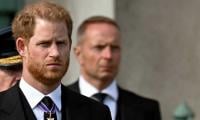KARACHI: Pakistan’s foreign exchange reserves climbed to the five-year high level of $23.2 billion in the week
that ended on April 9 and the central bank attributed the growth to the country’s return to the international debt market.
“The increase in reserves is attributed to receipt of proceeds of $2.5 billion against issuance of Pakistan euro bonds,” the State Bank of Pakistan (SBP) said in a statement on Thursday.
The country’s forex reserves increased to $23.2 billion — the highest level since June 30, 2016.
The reserves surged by Rs2.5 billion or 12.2 percent on a weekly basis. The reserves held by the country stood at $20.6 billion in the previous week.
The central bank’s reserves rose to $16.1 billion, marking the highest level since FY2017.
The State Bank of Pakistan’s reserves increased by $2.5 billion week-on-week. Its reserves amounted to $13.5 billion a week ago.
The reserves held by commercial banks stood at $7.1 billion.
Saad Hashemy, executive director at BMA Capital said this is an extremely positive development and credit goes to the government for swiftly concluding the issuance of the Eurobonds that has led to this rise. “Given strong remittances, there is no downside risk to reserves at least in the short to medium term.”
Samiullah Tariq, head of Research at Pak-Kuwait Investment Company said money from the international financial institutions started to flow after the International Monetary Fund’s (IMF) staff agreement,
“This includes flows from Euro bonds, other assistance from multilateral institutions. So, I don’t think reserves have any downside at present,” said Tariq. “Flows are also continuously coming from Roshan digital accounts.”
The reserves remained stable since the second quarter of the current fiscal year due to a host of factors: continued official and private inflows, appreciation in the exchange rate and the manageable current account.
Last month Pakistan received a third tranche of nearly $500 million from the IMF loan program. With the receipt of the latest tranche, Pakistan has received a total of around $2 billion so far.
The World Bank and ADB have also committed funds to Pakistan. This will help improve foreign exchange reserves and the rupee as well.
The rupee has appreciated 4.46 percent against the dollar so far this year.
Analysts believe the flexible exchange rate regime will work as an initial shock absorber for any imbalance current account deficit position, followed by policy rate adjustment. At present, the current account remained positive at $0.8 billion mainly aided by stable exports and higher remittances, while lower services deficit also played its part.
The market-determined exchange rate has supported external adjustment and reserve accumulation, the IMF said in its staff report.
“Preserving a market-determined exchange rate remains crucial to absorb external shocks, maintain competitiveness, and rebuild international reserves. Strong policies and reforms will help further build confidence in the rupee. In parallel, staff encouraged the authorities to continue to strengthen the central bank balance sheet, including by building buffers,” it said.
The government told the IMF in the second, third, fourth and fifth reviews that the SBP’s interventions remain guided by market conditions and the objective of rebuilding reserve buffers.
Forex sales are limited to preventing disorderly market conditions, while not suppressing an underlying trend. “As a result, net international reserves buffers were rebuilt by $6 billion and the net short swap/forward foreign exchange position was scaled back by more than $2 billion in FY2020.”
This initiative enables them to earn a dignified livelihood for their families
The event will host more than 700 booths, including leading global and Pakistani tech giants
Gold rates increased by $8 to all-time high rates of $2,371 per ounce in the international market
Strong retail sales prompted economists at Goldman Sachs to boost their gross domestic product
The IMF dictates its terms based on our past performance
Goldman's profit rose 28 percent to $4.13 billion, or $11.58 per share, in the first quarter







